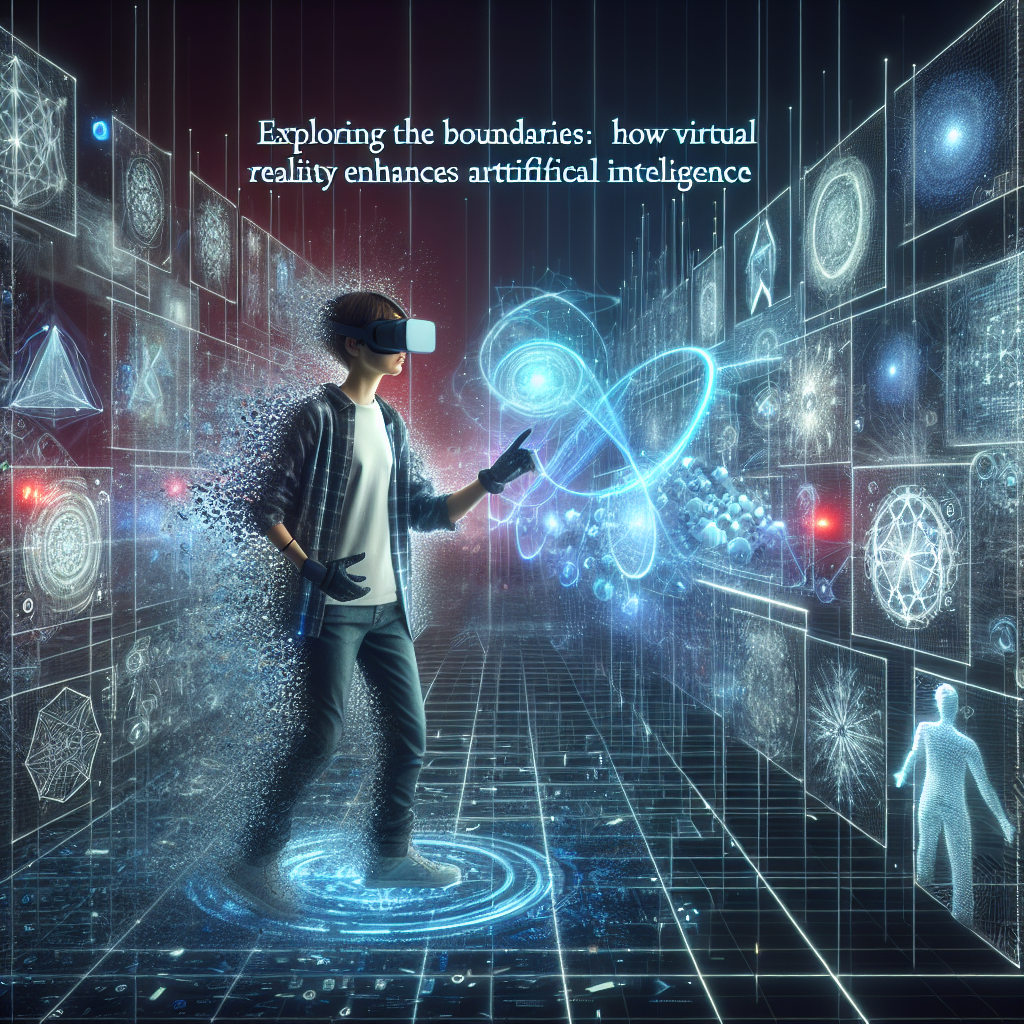Exploring the Boundaries: How Virtual Reality Enhances Artificial Intelligence
Artificial Intelligence (AI) and Virtual Reality (VR) have both been rapidly evolving technologies in recent years. While they may seem like two separate entities, the boundaries between AI and VR are starting to blur, creating new opportunities and challenges for both fields.
In this article, we will explore how virtual reality enhances artificial intelligence, the potential benefits and applications of this integration, and the implications it may have for the future of technology.
Understanding the Relationship between AI and VR
Artificial Intelligence is the simulation of human intelligence processes by machines, especially computer systems. It involves tasks such as learning, reasoning, problem-solving, perception, and language understanding.
Virtual Reality, on the other hand, is the computer-generated simulation of a three-dimensional environment that can be interacted with in a seemingly real or physical way by a person using special electronic equipment, such as a helmet with a screen inside or gloves fitted with sensors.
While AI and VR may seem like unrelated technologies, they share a common goal of enhancing user experiences and interactions with technology. The integration of AI and VR can create more immersive and personalized experiences for users, as well as improve the efficiency and accuracy of AI systems.
Enhancing AI with VR
Virtual Reality can enhance Artificial Intelligence in several ways:
1. Data Visualization: Virtual Reality can provide a more intuitive and immersive way to visualize complex data sets and algorithms. By creating interactive and immersive visualizations, AI systems can be better understood and optimized by users.
2. Training and Simulation: Virtual Reality environments can be used to train and test AI algorithms in realistic and controlled settings. This can help AI systems learn faster and more effectively, as well as reduce the risk of errors and accidents in real-world applications.
3. User Interaction: Virtual Reality can enable more natural and intuitive interactions between users and AI systems. By using gestures, voice commands, and other forms of input, users can engage with AI systems in a more immersive and engaging way.
4. Personalization: Virtual Reality can create personalized and customized experiences for users based on their preferences, behaviors, and feedback. By adapting AI algorithms to individual users in real-time, virtual reality can enhance the relevance and effectiveness of AI systems.
Benefits and Applications of AI-powered VR
The integration of AI and Virtual Reality has the potential to revolutionize a wide range of industries and applications:
1. Healthcare: Virtual Reality can be used to simulate medical procedures, train healthcare professionals, and provide therapy for patients with physical or mental health conditions. By integrating AI algorithms into virtual reality environments, healthcare providers can improve diagnoses, treatments, and patient outcomes.
2. Education: Virtual Reality can enhance the learning experience by creating interactive and immersive simulations of historical events, scientific phenomena, and other educational content. By using AI to personalize and adapt virtual reality experiences to individual students, educators can improve engagement, retention, and comprehension.
3. Entertainment: Virtual Reality can transform the entertainment industry by creating immersive and interactive experiences for video games, movies, and other forms of media. By using AI to create dynamic and responsive virtual reality environments, content creators can engage audiences in new and innovative ways.
4. Business: Virtual Reality can revolutionize the way businesses communicate, collaborate, and operate. By using AI-powered virtual reality platforms for meetings, presentations, training, and remote work, companies can improve productivity, efficiency, and innovation.
5. Social Interaction: Virtual Reality can bring people together in shared virtual spaces, regardless of their physical location. By using AI to create realistic avatars, interactive environments, and personalized experiences, virtual reality can enhance social interactions and relationships.
Implications for the Future
The integration of AI and Virtual Reality has the potential to transform the way we interact with technology, each other, and the world around us. As these technologies continue to evolve and converge, new opportunities and challenges will emerge:
1. Ethical and Privacy Concerns: The use of AI and Virtual Reality raises ethical and privacy concerns related to data collection, surveillance, bias, and manipulation. As these technologies become more pervasive and powerful, it will be important to establish clear guidelines and regulations to protect users’ rights and identities.
2. Technological Advancements: The integration of AI and Virtual Reality will drive new technological advancements in areas such as machine learning, computer vision, natural language processing, and human-computer interaction. By combining the strengths of both fields, researchers and developers can create more intelligent, adaptive, and immersive systems.
3. Cognitive and Behavioral Changes: Virtual Reality can have a profound impact on human cognition, perception, and behavior. By immersing users in virtual environments, AI-powered virtual reality can influence emotions, decision-making, and social interactions in ways that have yet to be fully understood.
4. Economic and Social Disparities: The adoption of AI and Virtual Reality may widen economic and social disparities between individuals, organizations, and countries. As these technologies become more advanced and accessible, it will be important to address issues such as digital divide, job displacement, and cultural diversity.
FAQs
Q: How does Virtual Reality enhance Artificial Intelligence?
A: Virtual Reality can enhance Artificial Intelligence by providing a more immersive and interactive environment for AI systems to learn, adapt, and interact with users.
Q: What are some applications of AI-powered Virtual Reality?
A: Some applications of AI-powered Virtual Reality include healthcare simulations, educational experiences, entertainment content, business collaborations, and social interactions.
Q: What are the implications of integrating AI and Virtual Reality?
A: The integration of AI and Virtual Reality can have ethical, technological, cognitive, and economic implications for individuals, organizations, and societies.
In conclusion, the boundaries between AI and Virtual Reality are becoming increasingly blurred, creating new opportunities and challenges for technology innovation. By exploring the relationship between these two fields, we can harness the power of AI-powered virtual reality to enhance user experiences, advance scientific research, and shape the future of human-machine interactions.
